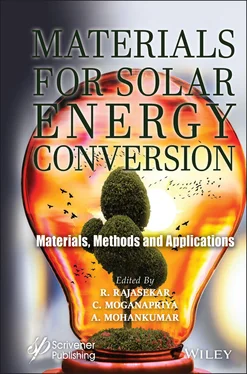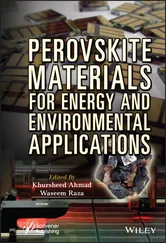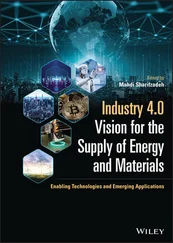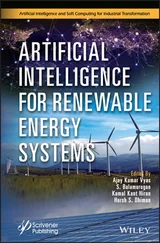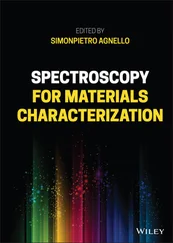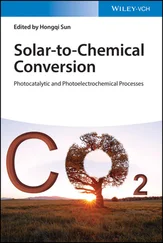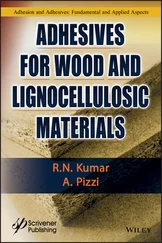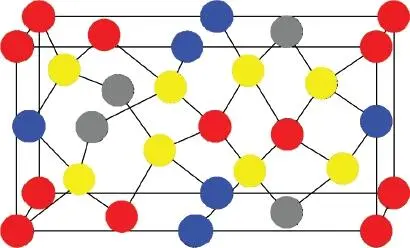
Figure 2.6 Copper zinc tin sulfide PV cell.

Figure 2.7 Dye sensitized PV cell.
Organic electronics is a branch of study which briefs about tiny organic molecules and polymers; it is incorporated in organic solar cells for power production [7]. Schematic diagram of organic photovoltaic solar cell is shown in Figure 2.8. The photovoltaic effect is used to receive sunlight and transport charge to produce electricity. The polymer solar cell is a type of organic photovoltaic cell, and it is used to produce high volumes at low cost [21]. Due to its flexibility, it is cheap and most appropriate for photovoltaic applications. It has higher absorption coefficient of organic molecules; hence, receiving of large amount of solar light is possible with smaller materials, and it is in the range from few hundreds to few thousand of nanometers. However, this system has few drawbacks such as lesser efficiency, strength, and stability compared to inorganic solar cells.
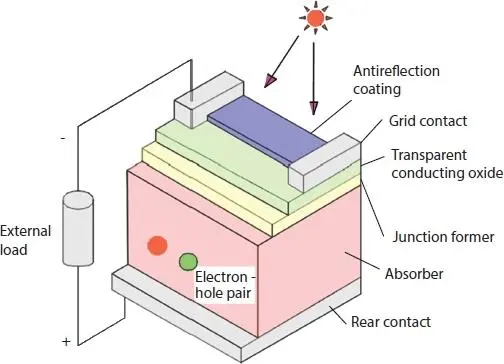
Figure 2.8 Organic PV cell.
2.4.4 Perovskite PV Solar Cells
The perovskite solar cell is one kind of solar cell which comprises perovskite structured materials, namely, tin-halide–based materials and leadbased materials [29], which is shown in Figure 2.9. Perovskite structured compound called methylammonium lead halides, which is ease to manufacturing of cell and cheap. Efficiency of cell is raised from 3.8% to 21% within 6 years of intervals; it is considered as fastest growing photovoltaic solar cell technology [5, 17, 29]. It reduces production cost without compromising efficiency or increased efficiency, and this type of PV solar cells turned into commercially attractive [1].
2.4.5 Polymer Photovoltaic Cell
Method of fabrication of solar cells is similar to the manufacturing of IC (integrated circuit) and silicon wafer used in computers due to its high refinements. However, high manufacturing cost and difficulties in process are the reason for searching alternative technologies. Few advantages of polymer PV cells compared to silicon PV cells are less weight, less production cost, environmental friendly, and disposable. Polymer PV cells are highly transparent, and it can be used in doors, windows, and electronics; however, it offers 33% of efficiency compared to silicon solar cells; it also undergoes chemical degradation due to solar light and it has lower stability [1, 17]. Owing to tandem structure, polymer solar cells can achieve 10% efficiency as shown in Figure 2.10[8, 16].
2.4.6 Quantum Dot Photovoltaic Cell
Quantum dot acts as absorbing PV materials in solar cell as shown in Figure 2.11. It can be used for alternative materials, namely, cadmium telluride and silicon. The different ranges of energy level can be obtained by changing size of the dots. The band gap is fixed by using different materials [30]. Different materials are utilized to enhance efficiency of solar cells by storing solar spectrum [6].

Figure 2.9 Perovskite PV cell.

Figure 2.10 Polymer photovoltaic cell.

Figure 2.11 Quantum dot photovoltaic cell.
Quantum dots are also called as semiconducting elements, and its size should be lesser than radius of exciton bohr [12]. Quantum dots are also called as synthetic atoms. By changing dot size, it influences energy levels and band gaps [22]. Dots are grownup with different sizes and influencing band gaps without effecting materials and building techniques [8]. Different blending duration and temperatures affect wet chemistry preparations. Solar cells needed quantum dots for adjusting band gap. In conventional methods of adjusting band gap, using lead sulfide as mono junction implementation is difficult [2]. Half of the solar energy attained to the earth surface is mostly near to the infrared region. The quantum dot PV cells makes infrared reachable [9].
This chapter discusses about various photovoltaic solar cells with diagrams, namely, copper zinc tin sulfide PV cell, dye sensitized PV cell, organic PV cell, perovskite PV solar cells, polymer photo-voltaic cell, and quantum dot photovoltaic cell. Additionally, different technologies and manufacturing companies of first-, second-, and third-generation solar photovoltaic cells are listed.
1. Bagher, A.M., Vahid, M.M.A., Mohsen, M., Types of solar cells and application. Am. J. Opt. Photonics, 3 , 5, 94–113, 2015.
2. Baskoutas, S. and Terzis, A.F., Size-dependent band gap of colloidal quantum dots. J. Appl. Phys., 99 , 1, 013708, 2006.
3. Chen, S., Gong, X., Walsh, A., Wei, S.-H., Crystal and electronic band structure of Cu 2 ZnSn X 4 (X= S and Se) photovoltaic absorbers: First-principles insights. Appl. Phys. Lett., 94 , 4, 041903, 2009.
4. Collavini, S., Völker, S.F., Delgado, J.L., Understanding the outstanding power conversion efficiency of perovskite-based solar cells. Angew. Chem. Int. Ed., 54 , 34, 9757–9759, 2015.
5. de Wild-Scholten, M.M., Energy payback time and carbon footprint of commercial photovoltaic systems. Sol. Energy Mater. Sol. Cells, 119 , 296–305, 2013.
6. Strümpel, C., McCann, M., Beaucarne, G., Arkhipov, V., Slaoui, A., Švrček, V., Del Cañizo, C., Tobias, I., Modifying the solar spectrum to enhance silicon solar cell efficiency—An overview of available materials. Sol. Energy Mater. Sol. Cells ., 15, 91, 4, 238–249, 2007.
7. Fthenakis, V.M., Life cycle impact analysis of cadmium in CdTe PV production. Renewable Sustainable Energy Rev., 8 , 4, 303–334, 2004.
8. Gevorgyan, S.A., Madsen, M.V., Dam, H.F., Jørgensen, M., Fell, C.J., Anderson, K.F., Elschner, A., Interlaboratory outdoor stability studies of flexible roll-to-roll coated organic photovoltaic modules: Stability over 10,000 h. Sol. Energy Mater. Sol. Cells, 116 , 187–196, 2013.
9. Ghawade, S.P., Deshmukh, A.D., Deshmukh, K.A., Dhoble, S., The rise of solar cells. Recent Adv. Photovoltaics , 17, 1–38, 2017.
10. Hagfeldt, A. and Grätzel, M., Molecular photovoltaics. Acc. Chem. Res., 33 , 5, 269–277, 2000.
11. Jacobson, M.Z., Review of solutions to global warming, air pollution, and energy security. Energy Environ. Sci., 2 , 2, 148–173, 2009.
12. Jorgensen, M., Norrman, K., Krebs, F., Stability/degradation of polymer solar cells. Sol. Energy Mater. Sol. Cells, 5 , 92, 686, 2008, https://doi.org/10.1016/j. solmat.
Читать дальше
